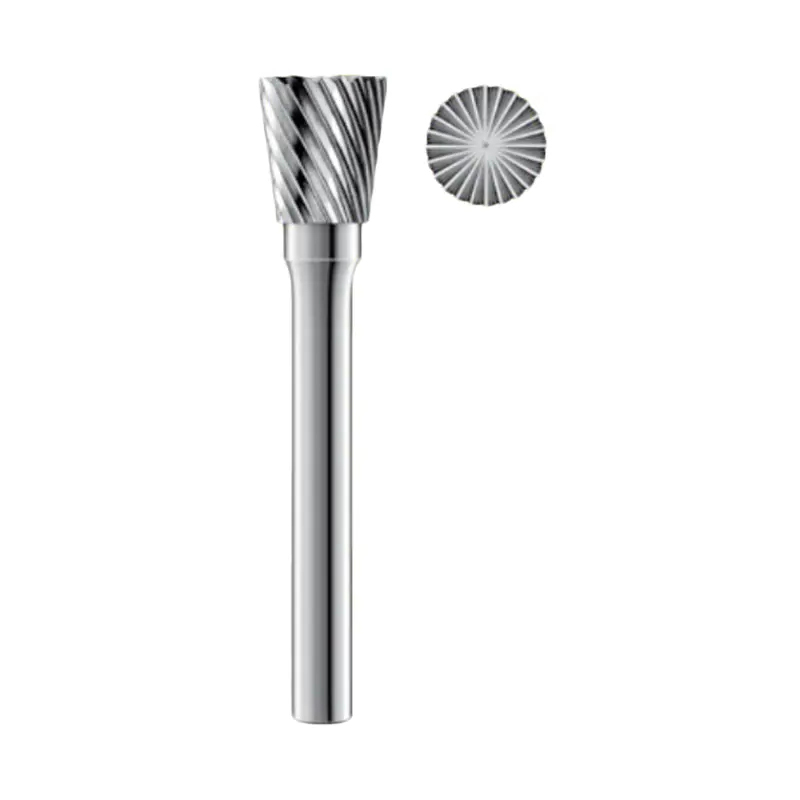In the intricate world of metalworking and precision machining, the role of carbide burrs cannot be overstated. These versatile tools are essential for a wide range of applications, from deburring and finishing to intricate carving and polishing tasks. The key to getting out of your cone burr bits, carbide carving burrs, and carbide polishing burs lies in proper maintenance and sharpening practices.

Carbide burrs are known for their hardness and durability, but even these robust tools require regular maintenance to perform at their best. Dull or improperly maintained cone burr bits can cause increased friction, heat buildup, and even tool breakage, which can compromise the quality of your work and increase production costs. By keeping your carbide carving burrs and carbide polishing burs sharp and well-maintained, you can achieve cleaner cuts, smoother finishes, and a more efficient workflow.
step in maintaining the performance of your carbide burrs is regular inspection and cleaning. After each use, examine your cone burr bits for any signs of wear or damage. Remove any debris or swarf that may have accumulated during the machining process. This can be done using a soft brush or compressed air, taking care not to damage the cutting edges of your carbide carving burrs or carbide polishing burs.
While carbide burrs are designed to maintain their sharpness for an extended period, they will eventually require sharpening. There are several methods for sharpening your cone burr bits, carbide carving burrs, and carbide polishing burs, including:
1. Grinding Wheels: Use a grinding wheel with a suitable grit size to reshape the cutting edges of your carbide burrs. Ensure that the wheel is rotating at the correct speed and that you are applying even pressure to avoid damaging the tool.
2. Diamond Hones: Diamond hones are an outstanding option for sharpening carbide burrs, as they provide a fine and precise sharpening surface. Gently rub the cutting edges of your cone burr bits, carbide carving burrs, and carbide polishing burs along the hone to maintain a sharp edge.
3. Lapping Compounds: For a more refined sharpening process, use a lapping compound on a flat, non-porous surface. This method is particularly useful for achieving a mirror finish on your carbide burrs.
Proper storage is crucial to maintaining the sharpness and performance of your carbide burrs. After cleaning and sharpening, store your cone burr bits, carbide carving burrs, and carbide polishing burs in a dry, dust-free environment. Consider using protective cases or sleeves to prevent damage and corrosion.
Preventive Maintenance Tips
To extend the life of your carbide burrs and ensure consistent performance, consider the following preventive maintenance tips:
1. Use the Correct Speed: Always use the recommended speed settings for your specific cone burr bits, carbide carving burrs, and carbide polishing burs to avoid overheating and premature wear.
2. Lubricate During Use: Applying a cutting fluid or lubricant can help reduce friction and heat buildup, prolonging the life of your carbide burrs.
3. Rotate Burrs Regularly: To ensure even wear, rotate your carbide burrs regularly, especially during prolonged use.
4. Avoid Overloading: Pushing your carbide burrs beyond their capacity can cause breakage or rapid dulling. Always work within the recommended limits for your specific tools.
By following these maintenance and sharpening guidelines, you can keep your cone burr bits, carbide carving burrs, and carbide polishing burs in top condition, ensuring good performance and longevity. Investing in the proper care of your carbide burrs not only improves the quality of your work but also contributes to a more efficient and cost-effective production process.